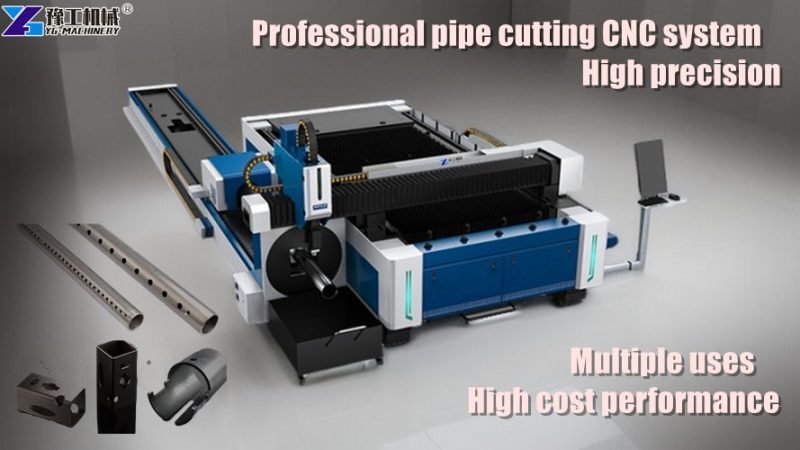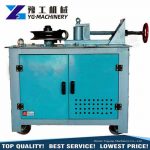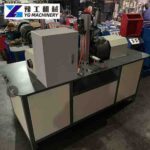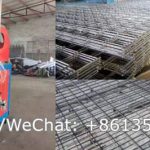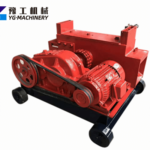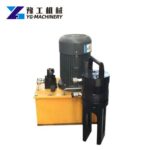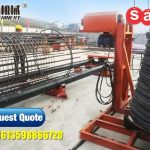Steel pipe is a very important building material in life. Whether it is transporting fluid and powdery solids, exchanging heat, manufacturing machinery parts and containers, manufacturing building structure grids, pillars, and mechanical supports, or in the production of home furniture. See steel pipes of various materials. What are the types of steel pipes? What are the dimensions and specifications of steel pipes? Let’s take a look at the steel pipe.

➡Presentations of Steel Pipes
Steel pipe is a very important building material in life, and is favored for its unique product features and aesthetics. Steel pipe is an economical steel product. There are many kinds of steel products and specifications, and their performance requirements are also various. Steel pipes can be used to transport fluids and powdery solids, exchange heat, and manufacture mechanical parts and containers. Using steel pipes to manufacture building structure grids, pillars and mechanical supports can reduce weight, save 20-40% of metal, and realize factory-like and mechanized construction. The use of steel pipes to manufacture highway bridges can not only save steel and simplify construction, but also greatly reduce the area of the protective layer, saving investment and maintenance costs.
➡Types and uses of steel pipes
The steel pipes can be divided into different types according to the different methods.
According to the production method
It can be divided into seamless steel pipe and seamed steel pipe, and seamed steel pipe is called straight seam steel pipe for short. Seamless steel pipes can be used in various industries such as liquid pressure pipelines and gas pipelines. Welded pipes can be used for water pipes, gas pipes, heating pipes, electrical pipes, etc.
According to the use of steel pipe
1. Pipeline pipe. Such as: seamless pipes for water, gas pipes, steam pipes, petroleum pipelines, and pipes for oil and gas trunk lines. Agricultural irrigation faucets with pipes and sprinkler irrigation pipes, etc.
2. Tubes for thermal equipment. Such as boiling water pipes, superheated steam pipes for general boilers, superheated pipes for locomotive boilers, large smoke pipes, small smoke pipes, arch brick pipes, and high-temperature and high-pressure boiler pipes.
3. Pipes for the machinery industry. Such as aerospace structural tubes (round tubes, oval tubes, flat oval tubes), automobile half-axis tubes, axle tubes, automotive tractor structural tubes, tractor oil cooler tubes, square tubes and rectangular tubes for agricultural machinery, transformer tubes, and bearings. tube etc.
4. Pipes for petroleum geological drilling. Such as: oil drilling pipe, oil drill pipe (kelly and hexagonal drill pipe), drill jack, oil tubing, oil casing, various pipe joints, geological drilling pipe (core pipe, casing, active drill pipe, drill jack, by hoop and pin joints, etc.).
5. Pipes for the chemical industry. Such as: petroleum cracking pipes, chemical equipment heat exchangers and pipes, stainless acid-resistant pipes, high-pressure pipes for fertilizers, and pipes for transporting chemical media.
6. Manage by other departments. Such as: tubes for containers (tubes for high-pressure gas cylinders and general container tubes), tubes for instruments, tubes for watch cases, tubes for injection needles and medical equipment, etc.
According to steel pipe material
Steel pipes can be divided into carbon pipes, alloy pipes, stainless steel pipes, etc. according to the pipe material (ie steel type). Carbon tubes can be divided into ordinary carbon steel tubes and high-quality carbon structural tubes. Alloy tubes can be divided into: low alloy tubes, alloy structural tubes, high alloy tubes, and high strength tubes. Bearing tubes, heat-resistant and acid-resistant stainless tubes, precision alloy (such as Kovar alloy) tubes and high-temperature alloy tubes, etc.
➡Steel pipe specifications and sizes
Divide 1 inch into 8 equal parts, there are 1/8, 1/4, 3/8, 1/2, 5/8, 3/4, and 7/8 inches.
It is equivalent to the usual 1 to 7 tubes, and the smaller sizes are represented by 1/16, 1/32, and 1/64, and the unit is still inches. If the denominator and the numerator can be reduced (such as the numerator is 2, 4, 8, 16, 32), it should be reduced.
The indication of inches is marked with two strokes in the upper right corner. Such as 1/2″, such as DN25 (25mm, the same below) is the imperial 1″ water pipe. The DN15 water pipe is the imperial 1/2″ water pipe. For example, the DN20 water pipe is the imperial 3/4″ water pipe, which is also the 6-point water pipe before liberation.
Sizes: DN15 (4 tubes), DN20 (6 tubes), DN25 (1 inch tube), DN32 (1 inch 2 tubes), DN40 (1 inch and a half tubes), DN50 (2 inch tubes), DN65 (2 inch tubes) Half pipe), DN80 (3-inch pipe), DN100 (4-inch pipe), DN125 (5-inch pipe), DN150 (6-inch pipe), DN200 (8-inch pipe), DN250 (10-inch pipe), etc.
➡How to choose steel pipes?
- Choose the color that is generally uniform. The inner and outer walls are smooth and flat. And there are no bubbles, depressions, impurities or other defects that affect surface performance.
- It depends on whether the identification on the product is complete. The steel pipe must have the name or trademark of the manufacturer, the date of production, the product name, the size, the implementation standard number, etc. And the steel pipe must have the product name, nominal outer diameter, pipe series S, etc. The handwriting should be clear. And check whether the logo is consistent with the actual situation.
- You should buy pipes and fittings of the same brand. Because the raw materials of different brands of products may be different, there will be unfavorable factors for the welding of pipes and fittings, and long-term use will cause leakage at the weld.
- Good steel pipes have high strength rather than being unbreakable. So the quality of steel pipes cannot be judged by whether they can be broken. Because the impact resistance of steel pipes is better than that of real steel pipes, steel pipes are easier to smash, and steel pipes are often the ones that cannot be smashed.
Read also:
➡Maintenance of steel pipes
Wash with clean water
Cleaning with clean water is to rinse the inner wall of the steel pipe with clean water. But it cannot completely remove impurities such as calcium and magnesium ion scale and biological slime attached to the inner wall of the steel pipe, and the effect is not obvious.
Potion cleaning
Chemical cleaning is adding chemical reagents to the water. But the chemical composition is corrosive to the steel pipe. And it also shortens the life of the steel pipe.
Physical cleaning
Now on the market, the working principle is basically to use compressed air as the power. And use the launcher to launch a special projectile larger than the inner diameter of the pipe into the steel pipe. So that it moves at high speed along the inner wall of the pipe, and fully rubs it to clean the inner wall of the pipeline. The cleaning effect of this method is obvious, and there is basically no damage to the pipeline. It is the most thorough cleaning method so far.

